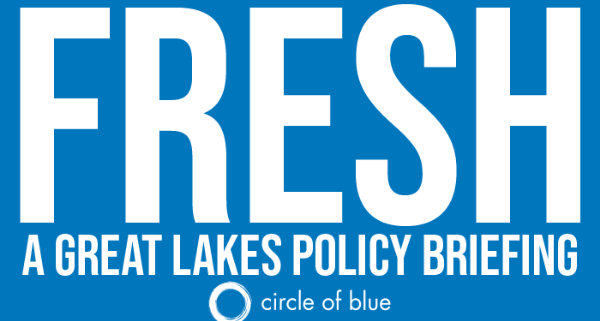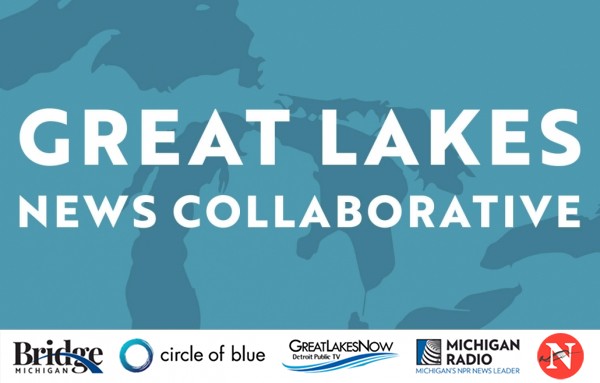Fresh, October 1, 2024: ‘Silver Tsunami’ of Retirements Leading to Water Sector Worker Shortages
October 1, 2024
Fresh is a biweekly newsletter from Circle of Blue that unpacks the biggest international, state, and local policy news stories facing the Great Lakes region today. Sign up for Fresh: A Great Lakes Policy Briefing, straight to your inbox, every other Tuesday.
— Christian Thorsberg, Interim Fresh Editor
This Week’s Watersheds
- Invasive quagga mussels have been discovered for the first time in Wisconsin’s Lake Geneva.
- The Canadian government has pledged a record $76 million to fund 50 projects that address Great Lakes region resiliency, water quality, and ecosystem health.
- The U.S. is on the cusp of a water utility workforce shortage, with retirements in the sector far exceeding recruitment.
- Wisconsin’s Department of Natural Resources is requesting $1.2 billion from the next two-year state budget, including $200 million for a controversial land stewardship fund.
Beginning on January 1, 2025, Minnesota’s “Made without PFAS” law will prohibit the sale of thousands of products that contain the toxic chemicals.
“The 2025 ‘Made without PFAS’ requirements are an essential step to protect Minnesotans and our communities, but the growing national demand for these safer products is an exciting opportunity.” — Katrina Kessler, the Minnesota Pollution Control Agency commissioner.
The “most restrictive ban on these chemicals in the nation” will go into effect when the new year arrives, Minnesota officials reminded residents and business owners last week during a press conference, Minnesota Public Radio reports. Exposure to the forever chemicals has been shown to be detrimental to human health, with symptoms including higher cholesterol, lower birth weights, lower immune response to vaccines, and changes to liver functioning.
The state expects store inventories to change, but does not anticipate any shortages as a result of the new law.
In 2018, Minnesota settled its lawsuit against the chemical manufacturer 3M for $850 million, after the company had polluted drinking water and rivers, lakes, streams, and wetlands with PFAS.
Fresh from the Great Lakes News Collaborative
- The lonely Lake Superior caribou and a lesson in limits — The Narwhal
- GLWA will add more corrosion control agents in water treatment process — Michigan Public
- How do fish survive in large urban waterways, like the Chicago River? — Great Lakes Now
- Michigan lawmakers divided but OK tax breaks to lure data centers — Bridge Michigan
Bridge Michigan, Circle of Blue, Great Lakes Now at Detroit Public Television, Michigan Public and The Narwhal work together to report on the most pressing threats to the Great Lakes region’s water. This independent journalism is supported by the Charles Stewart Mott Foundation. Find all the work here.
Water Sector Worker Shortages Loom
In 2023, there were roughly 89,000 water utility workers across the U.S. — 20 percent of whom were age 55 or older, with only six percent 24 or younger. Between 30 and 50 percent of the workforce will be eligible to retire within the next five to 10 years, Bruno Pigott, the EPA’s acting assistant administrator of water, told Michigan Public.
The trend is concerning officials, who, according to the Bureau of Labor Statistics, will be responsible for filling an estimated 10,000 positions each year to maintain the public service industry’s workforce.
In Michigan, officials are leading community-building and training sessions to attract young workers to the profession. Water utility jobs are not often advertised in trade schools or community colleges in the same way as electrician, carpentry, and construction roles. This is why the Water Career Program, based in Grand Rapids, was created: a year-long internship that pairs students with a city employee in a municipal plant.
Local leaders hope that programs like this will offer students exposure to well-paying careers while filling a growing public service need.
In the News
Record Freshwater Funding: Seven projects in the greater Windsor area will collectively receive nearly $19 million from the federal government over the next four years as part of Canada’s Great Lakes Freshwater Ecosystem Initiative, the Windsor Star reports. Meanwhile, 13 additional projects — led by the Essex Region Conservation Authority, University of Windsor, Flowers Canada, and Chippewas of the Thames First Nation — will specifically address harmful algal blooms in Lake Erie. A total of 50 partner-led projects across Ontario were awarded $76 million as part of the most recent round of the initiative’s funding, which in 2023 pledged an investment of $420 million over the next decade.
Wisconsin DNR Funding: Wisconsin’s Department of Natural Resources has requested $1.2 billion from the next two-year state budget, including the proposed reauthorization of the Knowles-Nelson Stewardship Program — which oversees land purchases — for $100 million per year. Wisconsin Public Radio reports that the program has helped acquire 70,000 acres of the Pelican River Forest by the Conservation Fund, and similar purchases that have divided the state’s government generally along party lines. The DNR is also seeking $505 million to address a backlog of projects, primarily the maintenance of “facilities, roads, bridges, trails and other structures.”
Looking Ahead
Officials in Wisconsin are concerned after invasive quagga mussels, known for their resiliency and harm to native plants and animals, were found for the first time in Lake Geneva, near the Illinois border, the Daily Cardinal reports. It is the first time that the species has been identified in the state in a lake other than the Great Lakes. According to the Cardinal, “the interconnectedness of Wisconsin’s waterways means that an invasive species in one lake can easily spread to another through boat traffic, fishing gear or natural water movements.”
Upcoming Events
October 1-3 — Great Lakes Beach Association Conference — learn more
October 7-9 — Great Lakes Coastal Symposium — learn more
October 8-10 — 2024 Great Lakes Commission Annual Meeting — learn more
October 9 — Let’s Talk Lake Erie: Habitat and Species Protection in Lake Erie — learn more
Other News
Ballast Water Standards Changes: Finalized last week by the EPA, the new ballast water treatment regulations — aimed at limiting the spread of invasive species through the Great Lakes — will only apply to new vessels, not existing ones, Wisconsin Public Radio reports.
Muskegon Lake: After scientists identified high concentrations of toxic PFAS chemicals in western Michigan’s Muskegon Lake this summer, Mayor Ken Johnson has assured residents following water testing that “our drinking water…is coming back below those thresholds, both current and future,” Michigan Live reports.
Christian Thorsberg is an environmental writer from Chicago. He is passionate about climate and cultural phenomena that often appear slow or invisible, and he examines these themes in his journalism, poetry, and fiction.









Leave a Reply
Want to join the discussion?Feel free to contribute!